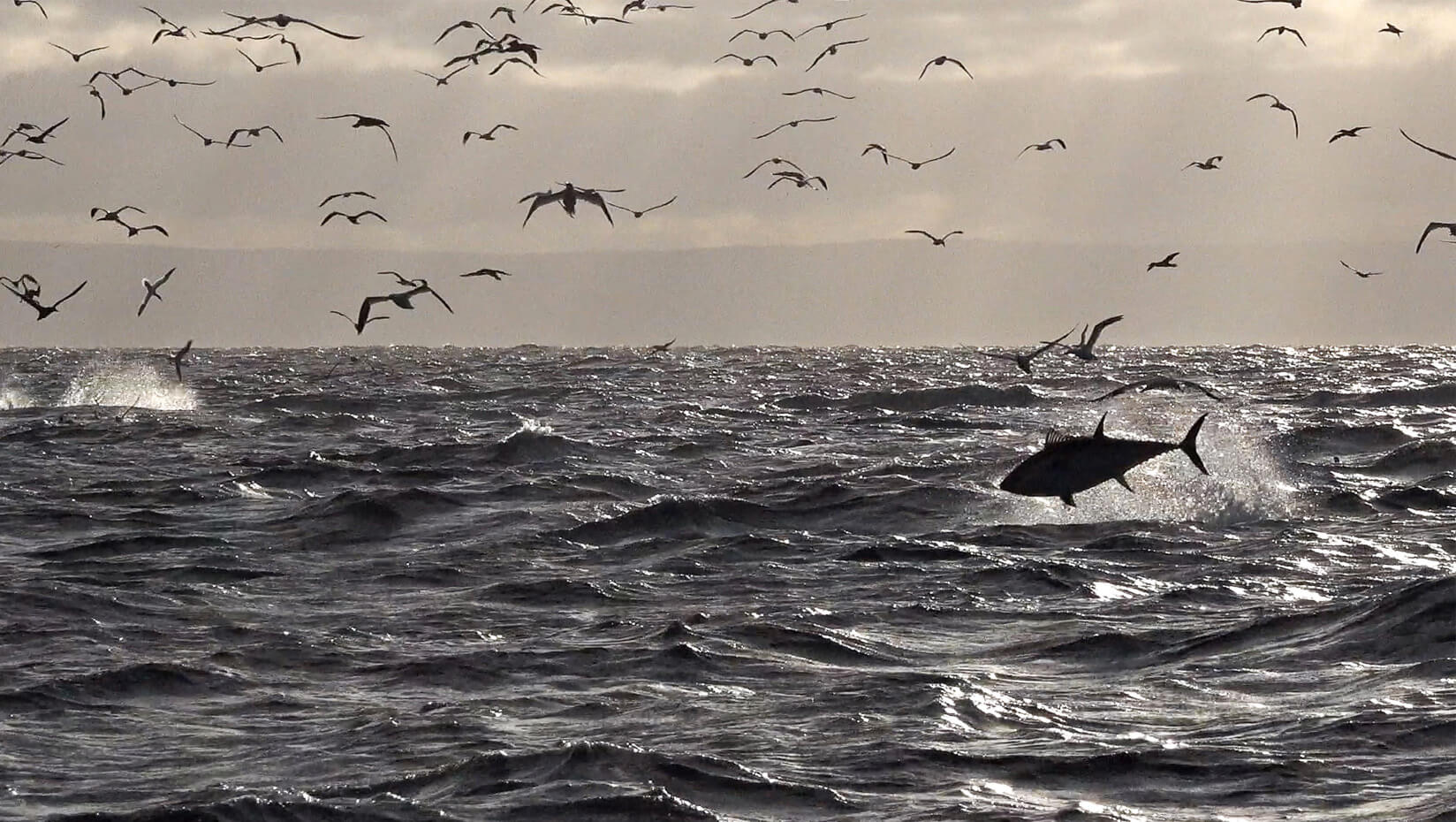
NOAA awards $1.6M to study the life histories of highly migratory species in the Atlantic Ocean and Gulf of Mexico
Improving stock assessment, management and sustainability of highly migratory species such as tuna, swordfish and sharks in the Atlantic Ocean and Gulf of Mexico is the goal of a new research consortium, led by Walt Golet at the University of Maine and funded by a $1.6 million grant from NOAA Sea Grant.
Funding to support the Pelagic Ecosystem Research Consortium was one of three competitive awards totaling $2 million awarded through the 2019 Sea Grant Highly Migratory Species Research Initiative. More information about the national initiative is on the NOAA Fisheries website. A news release about the awards is online.
The Pelagic Ecosystem Research Consortium will conduct several projects focused on bycatch reduction, increased understanding of life history, post-release mortality and other objectives for multiple species of highly migratory fish in the Northwest Atlantic and Gulf of Mexico.
“Highly migratory species are some of the most sought-after fish in the world, both commercially and recreationally, and yet there is so much to learn about their life history in order to improve the stock assessments that determine their population status, the allocation of fishing quotas and, ultimately, their sustainability,” says Golet, UMaine assistant professor in the School of Marine Sciences, who is a co-principal investigator on the project with David Kerstetter of Nova Southeastern University, Robert Hueter of Mote Marine Laboratory and Stephen Bullard of Auburn University.
Comprehensive information on the life history of highly migratory species is lacking, including data on age, growth, indices of abundance, reproduction, post-release and natural mortality, infectious disease, anthropogenic disturbance, habitat utilization/migratory behavior and stock structure.
Research by the consortium is expected to fill the gaps in information that will reduce uncertainty in stock assessment models and population status, and inform appropriate quotas to promote sustainability.
In particular, the consortium will gather data on:
- stock structure and life history of five tuna species (albacore, bigeye, bluefin, skipjack, yellowfin), swordfish, and at least 12 shark species (Atlantic sharpnose, blacknose, blacktip, bull, great and scalloped hammerheads, lemon, nurse, sandbar, spinner, tiger, and white sharks) in the Northwest Atlantic and Gulf of Mexico.
- fishes vulnerable as bycatch in Northwest Atlantic commercial pelagic longline fisheries, and from electronic monitoring of shark bycatch in Gulf of Mexico bottom longline fisheries.
- commercial and recreational post-release mortality of swordfish in the Northwest Atlantic and great hammerhead sharks in the Gulf of Mexico.
- life stage distribution and habitat of five tuna species (albacore, bigeye, bluefin, skipjack, yellowfin) and other pelagic teleosts, including mahi mahi, blue and white marlins, sailfish, swordfish and wahoo; pelagic sharks, including blue, shortfin mako and white sharks; and up to 11 coastal shark species.
- offshore oil platform impacts to health and movements of yellowfin tuna, comparing biological information on yellowfin tuna in the northern Gulf of Mexico, and those captured in the eastern Gulf of Mexico and Northwest Atlantic.
Contact: Margaret Nagle, 207.581.3745
